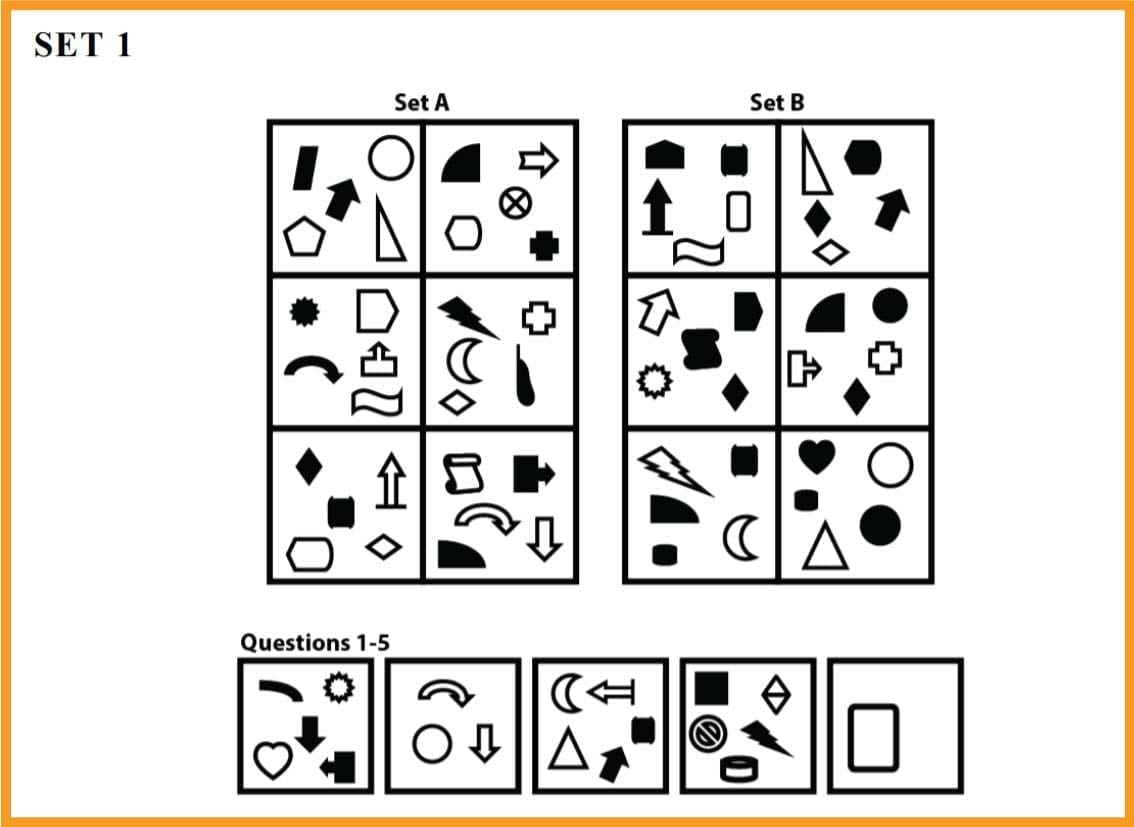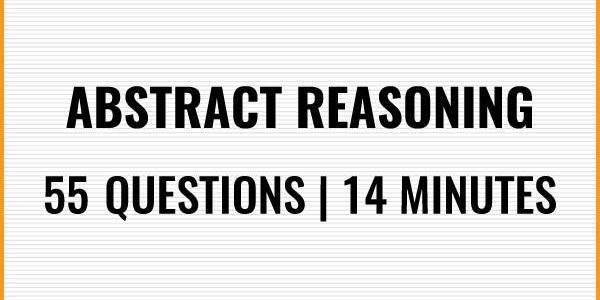UCAT Abstract Reasoning
55 questions | 14 minutes
Why is Abstract Reasoning included?
The idea behind UCAT abstract reasoning is to test how well the candidate is able to respond to questions that may go beyond the scope of their knowledge or require them to apply their existing knowledge in an unusual way. This is thought to be helpful in determining how well a student will be able to interpret information such as scans, X-rays or other test results as a clinician.
This is what a typical question looks like so you know what we’re talking about:

Timing
In the UCAT abstract reasoning section you have to answer 55 questions in only 13 minutes (with one additional minute to read instructions). Thus, it is mathematically the most time pressured section of the UCAT. But in terms of timing, think of each question as a full image set.
There are multiple questions per image set. Since the main investment in time is in figuring out the pattern, you have a greater proportion of the time to spend on the first question in each set. As a general rule of thumb, if there are 5 questions, you have around 60 seconds to complete the set.
The NSPCC Method (not the charity)
NSPCC helps with UCAT Abstract Reasoning because it forces you to look for a pattern, rather than just looking at the shapes.
We have a brilliant video on abstract reasoning from Zenab, going through usage of the NSPCC method;

-
Number
Number is all about counting as many things as possible. How many dots? How many squares? How many sides? How many corners? A quick tip would be that block arrows have 7 sides, so you don’t need to count all the sides every time you see one!
-
Size
Size is quite a common pattern that emerges frequently. Is one shape always bigger than the others? Is there always a big shape in corner, or in the middle? Are there smaller shapes inside bigger ones?
-
Position
Position is another common pattern. You might, for instance, always find a square in the top right corner in one set and a circle in the top right corner of the other set. Look for touching and overlap of shapes – when you see this, make careful note of the type of contact. Is it tangential? Does it cut the shape in equal pieces, or is it off centre? Is there a certain shape that always makes this contact?
-
Colour
Although they are black and white, the shading of shapes can constitute a pattern. This is often the easiest pattern to spot, but is lower down the methodology because it can serve as a distraction. Most diagrams have some sort of shading, but rarely is the main pattern you need to identify based on this. Look for shapes that are always shaded. Are there all black triangles in one shape, all black circles in another?
-
Conformation
Conformation is the hardest pattern to spot. Conformation describes the pattern by which the shapes are arranged within the box. You have to take a step back and look at the box as a whole in order to spot them. Look for patterns to the arrangement, like shapes arranged in a horizontal, vertical or diagonal line. Look also for the influence of one shape on another.
For example: the presence of a white circle might signal a 90 degrees clockwise rotation of one shape and the presence of a black circle might signal a 90 degrees anticlockwise rotation.
The styles of question you’ll come across
-
The first style: You are provided with two sets of six shapes, Set A and Set B.
All of the images within each set are linked to each other by a common rule, but the rule must be different for Set A and Set B. The task is to identify the rules for each set, then for the 5 options you need to decide where they belong.
-
The second style: You are provided with a single sequence of four shapes.
They should be read as a sequence from left to right. You are then asked to choose the next shape in the sequence out of four options. This style of question is normally quicker to answer as it is more intuitive.
-
The third style: You are provided with two shapes with a rule linking them.
The rubric states shape one is to shape two by this rule. Then you are provided with shape three, and you have to apply this rule to find out how the rule transforms shape three into shape four (you are given four options). Once again, the key to accuracy is in deducing the rule that links the shapes.
-
The fourth and final style: You are provided with two sets of six shapes, Set A and Set B, each linked by a common rule.
Once again apply the same system to deduce the rule for each set. The only difference comes when it is time to select your answer. Instead of being asked which set a shape fits into, you are provided with four options and asked to select the one that fits into one set or the other.
Now that you know everything you are ready for the UCAT abstract reasoning subtest!










